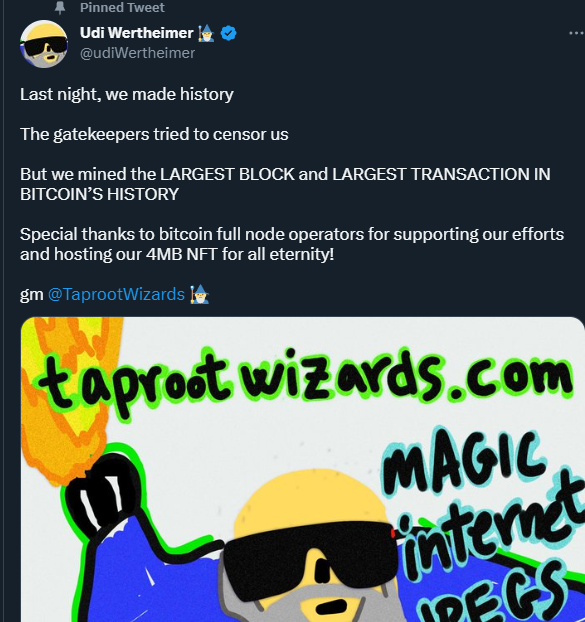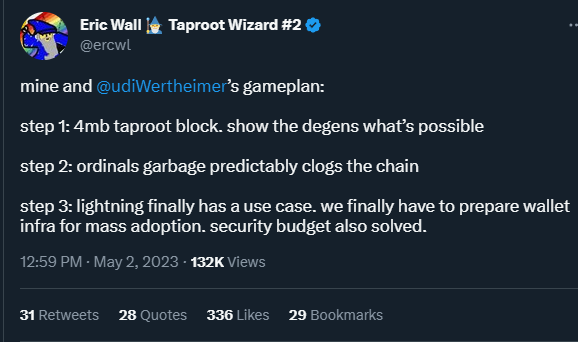
By: Adam Sharp
Author, The HIVE Newsletter
Something big (and controversial) is happening on the Bitcoin network.
NFTs and tokens are now being issued and traded on the original blockchain.
They’re called Ordinal Inscriptions, and they take advantage of a 2021 Bitcoin upgrade called Taproot.
Ordinals have absolutely taken off this year. Here’s a chart showing how fast the number of inscriptions is growing, via Dune Analytics.

Ordinals work by inscribing data, or images, into the Bitcoin blockchain. NFTs are stored as actual images on the blockchain (unlike Ethereum).
Tokens can also now be minted and traded in a fashion somewhat similar to how it works on Ethereum. These tokens are called BRC-20 (in a nod to ETH’s ERC-20 class of tokens).
Here are the largest tokens currently being traded on the Bitcoin network, via OrdSpace.

Miner Love, Maxi Hate
These inscriptions are competing with normal Bitcoin transactions for block space. As a result, transaction fees paid to miners have soared. Here’s a chart showing the average Bitcoin fee, via Coindesk.

A new ecosystem is quickly forming around Ordinals. And it’s great news for Bitcoin miners like HIVE, as the industry has seen a substantial boost to revenue.
But not everyone is happy. All these Ordinal transactions are clogging up the Bitcoin network. Fees are higher than they’ve been in years, and transactions are crawling.
Back in February, Udi Wetheimer proudly announced that his project Taproot Wizards had inscribed a 4MB JPEG into the blockchain as an Ordinal for eternity.

Last week things got so crazy that Binance had to briefly pause Bitcoin withdrawals. However, it is worth noting that they soon resumed with higher fees, and plans to integrate the Lightning network.
This is one of the most fascinating effects of Ordinals. It’s caused Bitcoin users everywhere to start seriously looking at “layer 2” solutions such as Lightning.
According to Eric Wall, Udi’s partner in crime at Taproot Wizards, this is all part of the plan.

At this point I think it’s safe to say that Ordinals aren’t going away on their own. Perhaps the Bitcoin community will attempt a software fix, but at some point it seems they’d need buy-in from miners on that. And miners are doing pretty well with the current situation.
So we’ll have to see how it plays out. It’s going to be fascinating to watch this one develop.
Adam Sharp
The HIVE Newsletter